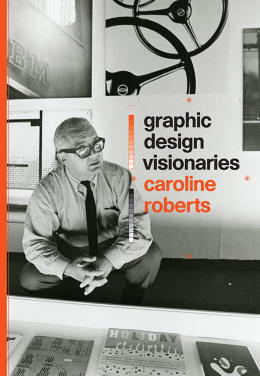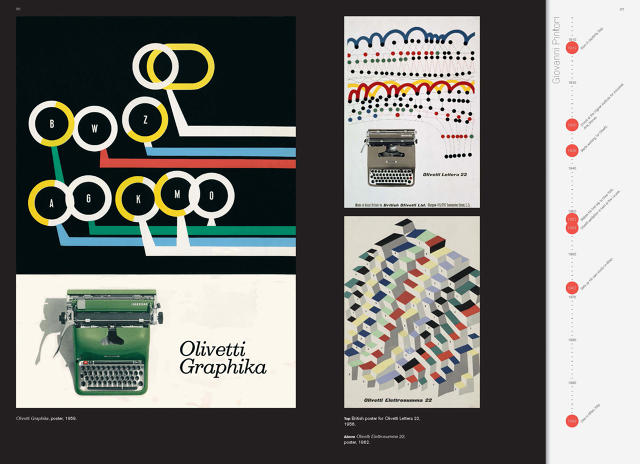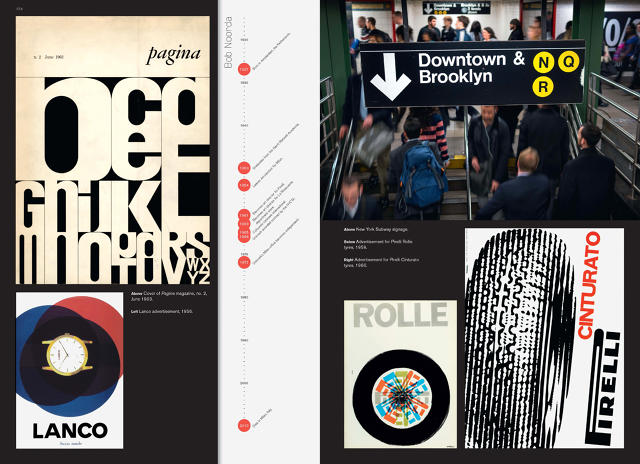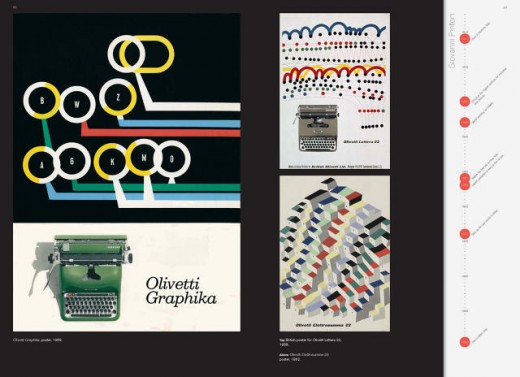10 Unsung Graphic Design Visionaries You Should Know
Will Burtin and Cipe Pineles might not be household names but you know their work—and have felt their influence.

“Visionary graphic designers will always be less visible than visionary architects or product designers because of the ephemeral nature of what they produce,” writer Caroline Roberts says. Her new book Graphic Design Visionaries (Laurence King, 2015) covers 75 influential practitioners spanning the well-known—Otl Aicher, Saul Bass, Stefan Sagmeister—and those not typically celebrated outside of the graphic design profession.
It’s the latter who have shaped the world around us in some profound and unexpected ways, from how we visualize data to the look of women’s magazines. “It’s unlikely that many of the designers featured in the book woke up one day and decided that they would try and change the world through graphic design,” Roberts says. “What links them all is a desire to break new ground, combined with a need to push standards higher.” Below and in the slide show above, she shares 10 of the lesser-known designers featured in the book.

Will Burtin
“One of the most significant but least celebrated U.S. designers, Will Burtin’s commitment to using design to simplify and enhance our understanding of complex, often scientific ideas means that he is considered by many to be the father of what we now call ‘data visualization,'” Roberts says.

Cipe Pineles
“A talented art director and illustrator, Pineles worked on several groundbreaking women’s magazines, including Seventeen and Charm,” Roberts says. “She was the first female designer to become a member of the Art Directors Club in New York.”

Giovanni Pintori
“For over 30 years, Giovanni Pintori worked in-house for the Italian typewriter manufacturer Olivetti,” Roberts says. “He played a crucial role in defining the Olivetti brand by creating a wealth of exciting publicity material that helped transform what was a well-designed, but very practical, piece of office equipment into object of desire in its own right.”

Yasaku Kamekura
“Often described as one of the godfathers of Japanese design, Yusaku Kamekura was one of the founders of the Nippon Design Center and played an essential role in shaping the country’s emerging graphic design industry in the post-war recovery period,” Roberts says. “A modernist at heart, his work effortlessly blended Eastern and Western sensibilities.”

Bob Noorda
“A Dutch designer who settled in Milan, Bob Noorda worked for clients such as Pirelli and Olivetti,” Roberts says. “The important part that he played—along with Massimo Vignelli—in creating the signage for the New York subway system is all too often overlooked.”

Lora Lamm
“One of many Swiss designers to emigrate to Milan after World War II, unlike her contemporaries—until quite recently—Lora Lamm was written out of graphic design history,” Roberts says. “Lamm created exuberant illustrations, exciting layouts, and bold typography for clients such as the department store La Rinascente and Pirelli Tires. An exhibition of her work has recently opened at the Museum für Gestaltung in Zurich.”

Margaret Calvert
“With Jack Kinneir, Margaret Calvert played an important part in the project which revolutionized signage for Britain’s road system in the late 1950s and 1960s,” Roberts says. “The road signs and pictograms have become as much a part of the fabric of the British landscape as the red pillar box or the black cab.”

Richard Saul Wurman
“Now best known for being the founder of TED, Richard Saul Wurman’s mission to increase the public’s understanding of complex data has led to him being referred to as one of the pioneers of modern information design,” Roberts says.

Rogério Duarte
“A true renaissance figure—in addition to being Brazil’s most revered graphic designer—Rogério Duarte is a musician, songwriter, poet, philosopher and professor,” Roberts says. “Duarte was also a key figure in Rio de Janeiro’s counterculture during the 1960s and was one of the founders of the avant-garde Tropicália cultural movement.”

Barney Bubbles
“His LP covers for Ian Dury, Hawkwind, and Elvis Costello were a huge influence on many designers growing up in the post-punk era, but Barney Bubbles—real name Colin Fulcher—was so modest that he rarely even used his own pseudonym to sign his work,” Roberts says.
Find Graphic Design Visionaries at laurenceking.com for $40.
[All Images: courtesy Laurence King]

Fast Company , Read Full Story
(81)



